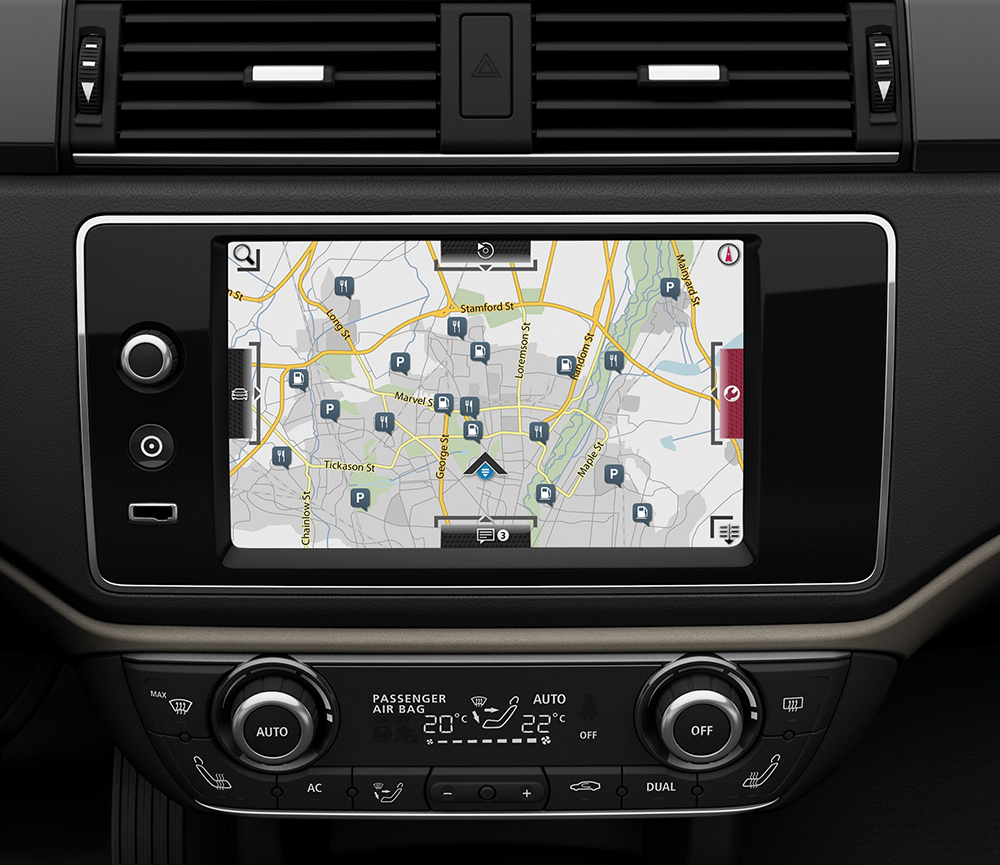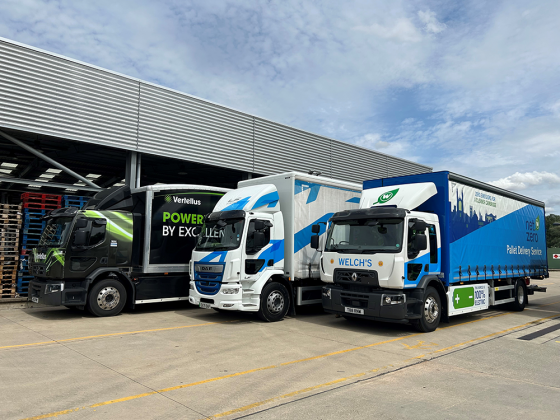How technology is enabling greener fleets

Technology is continuously changing the automotive industry, from the way vehicles are powered, to the way they are managed and used. Gerry Keaney, BVRLA chief executive, explains this three-pronged technical revolution which is leading to greener fleets.
The British Vehicle Rental and Leasing Association (BVRLA) recently released its Fleet Technology White Paper, which highlighted how there are radical changes in the way vehicles are powered, managed and used.
The reliance on petrol and diesel fuelled vehicles is in decline as a new family of electric vehicles finally delivers the range, mpg and cost of ownership required to make them serious contenders for rational fleet buyers.
After more than a decade when diesel has been the obvious choice for most fleet customers, the fleet industry is facing increasingly complex powertrain decisions. The main challenge to diesel’s dominant position is from technological developments that have enabled petrol engines to catch up in terms of cost and efficiency.
Improved boosting-technologies, such as superchargers and turbochargers are behind much of this revival. Their main impact has been to make small engines feel larger than they actually are, enabling carmakers to reduce engine sizes without sacrificing performance.
Diesel engines have also benefitted from improved boosting technologies, but not to the same extent. Consequently, the gap between the two fuels has narrowed in terms of cost, emissions and fuel economy.
Electric vehicle sales continue to accelerate, with new plug-in registrations up by 45 per cent in the first six months of 2016. Fleets continue to lead the way, registering three out of four new plug-ins registered.
Meanwhile, a number of mainstream manufacturers that make pure EVs are set to compete with Tesla over the next few years by introducing new models with larger battery packs and ranges of more than 300 miles.
In support of such developments, the UK government announced £40m of funding that will see cities across the country roll out hundreds of the new public fast and rapid charge points that will be needed by drivers of vehicles with larger batteries. The same grant is being used to fund a range of innovative EV user incentives, including free parking and access to bus and carpool lanes.
Battery advancements
There should also be some exciting developments in the role electric batteries play in enhancing the performance and fuel efficiency of conventional internal combustion engine vehicles, as a result of an anticipated shift from the current standard of 12 volt batteries towards cars fitted with 48 volt batteries.
In the medium term, perhaps as early as 2020, 48v powertrain systems, where the batteries are recharged by the internal combustion engine and from energy captured during braking, are expected to be ubiquitous.
It is claimed that 48v systems will be able to deliver 60-70 per cent of the fuel economy and emissions benefits of the high voltage mild hybrid systems used in today’s plug-in hybrids at just 30 per cent of the cost, because they avoid the need for expensive safety features and large battery packs. A wide variety of innovative system engineering – whether electrification, boosting or other technologies – are set to further improve the efficiency of internal combustion engines, cutting CO2 emission averages by 10-20 per cent in the next decade or so.
Connected cars
The powertrain is not the only element of a car that will undergo a technological change. Many new vehicles are already connected, but it’s estimated that 100 per cent of new cars will have an embedded modem by 2020. These connected cars will enable fleets to have pre‑installed telematics devices ready to go.
This connectivity facilitates the collection of enormous volumes of data about driver behaviour, user preferences and the vehicles themselves. Connected vehicles send diagnostics, location information and other vehicle data, while drivers may request information about the nearest garage or ask for a music track to be streamed to their car. Some manufacturers have engineered apps which enable drivers to unlock their car from their smartphone.
Fleet managers can use the data from connected vehicles enable better journey planning, identify unnecessary journeys and address poor driving styles. Yet while these technological developments allow rental and leasing companies to provide more added-value services to customers, they can also throw up plenty of headaches for fleet managers and vehicle manufacturers. There are still questions which need to be answered about who owns the data from a connected vehicle, and the fleet industry is keen to ensure there is a single standard for vehicle information, so that the data from a BMW can be compared to that from a Kia, for example.
Meanwhile, vehicle manufacturers are utilising these connected vehicles to send service or breakdown alerts to drivers. If, however, the car redirects the driver to the OEM’s preferred garage, rather than the leasing company’s approved maintenance provider, the vehicle manufacturer is effectively positioning itself as a competitor to a vehicle supplier.
Elsewhere, Tesla is offering ‘over the air’ upgrades, where drivers can download a software update that improves their vehicle’s EV range. Whatever progress is made, cars will always need servicing and mandatory interventions.
Changing the way you work
These technological developments require a fleet management revolution. For the last couple of decades, leasing companies have been offering a one-stop-shop that delivers accident management, downtime management, short-term rental, service maintenance, glass repair, and indeed management of anything that touches the vehicle.
This sole supplier model is now under greater pressure than ever before thanks to the prevalence of connected cars, as well as the detail available from an increasingly digitised supply chain. It is becoming easier than ever for fleets to shop around and demonstrate the savings that are being made – both environmental and financial.
Whatever the organisational model, whether in-house or outsourced, digitisation will be an increasing trend, with data analysis, smartphone apps and digital payments replacing call centres, static websites and traditional banking methods.
Many of those working within the fleet industry will find themselves outside their comfort zone, having to deal with new risks, recruit and manage new skillsets, and develop relationships with a complex array of new suppliers. Most importantly, they will have to deal with new customer expectations.
The car use revolution
We are also experiencing a fundamental shift in the way individuals and businesses use road transport. Traditional models of car use are being eroded in many urban areas, where the growing problems of congestion and air quality are forcing policymakers to introduce measures that are increasingly anti-car, including reduced road space and higher parking charges.
Elsewhere, a new group of motorists made up largely of a younger generation is embracing a service‑based mentality by renting or using shared vehicles, instead of owning or taking individual responsibility for them. This same generation is also comfortable with a digital, smartphone-enabled approach to buying and using mobility services. Those in this age category are more than happy to reduce their emissions, and take a sustainable attitude to their travel plans.
At the same time, technology is blurring the traditional boundaries between car clubs, vehicle rental and leasing. Rental and leasing companies have seized this opportunity and are rapidly developing their own digital platforms. This enables them to provide more flexible access to leased and rented vehicles, as well as to offer car sharing, parking services and tickets for public transport.
This explosion in mobility business models has led to the concept of Mobility as a Service (MaaS) being embraced by both local and national transport policymakers.
MaaS is about providing users, both travellers and freight, with seamless, on‑demand access to a range of transport modes tailored to their individual needs. Instead of viewing transport as a series of separate journeys, it will be delivered as an integrated, reactive, mobility system driven by technology and a desire for personalised services.
In its simplest form, this brings every kind of transport together in a single, intuitive mobile app that combines transport options from different providers, handling everything from travel planning to payments and expenses.
This end-goal is particularly appealing to urban transport planners who want to tackle the congestion, safety and air quality challenges in their ever-expanding cities by reducing private vehicle ownership and use. Instead of viewing transport as a series of separate journeys, with MaaS it is integrated. Every kind of transport can be brought together in a single, intuitive mobile app that combines options from different providers.
Rental and leasing companies continue to play a key role in this world of mobility services, whether they are delivering a bespoke solution or something that has been bought off the shelf.
Conclusion
These three revolutions will benefit society but create new challenges for fleet operators.
However, they should be seen as an opportunity. They are an opportunity to reduce carbon emissions. An opportunity to optimise business journeys. And an opportunity to operate a more efficient fleet.
There will be more of these challenges and opportunities going forward, with more technological developments. Fortunately, the fleet industry has years of experience of delivering innovative services to their customers, and BVRLA members should be the first point of call for any company seeking fleet management advice.






